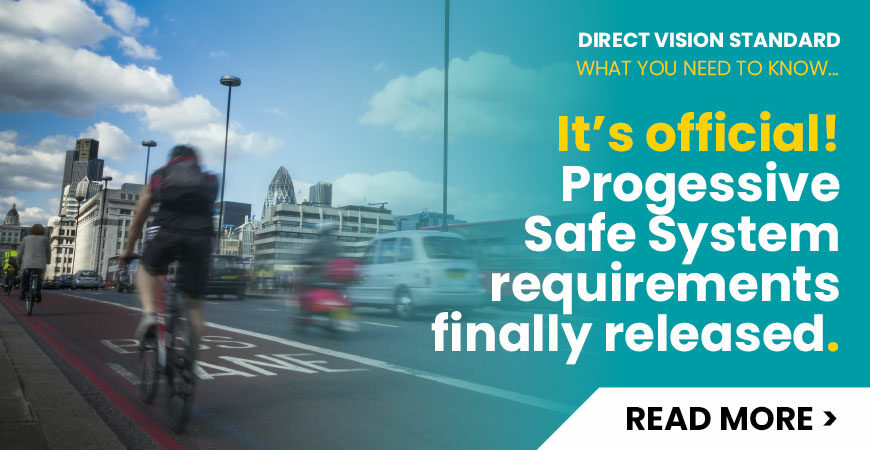What is the new Progressive Safe System Direct Vision Standard and HGV Safety Permit?
The HGV Safety Permit Scheme for Greater London requires all HGVs weighing over 12 tonnes to hold a valid safety permit unless exempted according to the exemptions policy.
The permit’s conditions depend on the vehicle’s DVS star rating, and if the rating is below the minimum required, additional safety features are necessary. The scheme has evolved since its launch in 2019, with the minimum DVS star rating increasing from one to three stars by October 2024.
To meet the new requirements, vehicles with a rating of two stars or below, including unrated ones, must install the Progressive Safe System (PSS), a set of safety measures designed to reduce risks to vulnerable road users. The Progressive Safe System aligns with various safety standards and has been developed through consultation with industry stakeholders.
For compliance, vehicles need to have the required DVS star rating or install the PSS by October 28, 2024. A grace period is available for vehicles that register by this date and demonstrate steps towards Progressive Safe System (PSS) installation, subject to approval by TfL’s operations team.
Detailed instructions for permit applications and compliance can be found in the provided document below.
IMPORTANT INFORMATION
How do I make my vehicle compliant? Until 27 October 2024, the minimum DVS rating to operate in London is one star; this will increase to three stars from 28 October 2024.
If your vehicle meets the relevant minimum DVS star rating, you will be able to apply for a permit without taking further action to fit additional safety measures.
If your vehicle does not meet the relevant minimum DVS star rating or is not rated, you will need to make your vehicle safer by fitting the Progressive Safe System (PSS) by 28 October 2024 before receiving a permit.
Details of the PSS are set out below.
To give the freight industry enough time to obtain, fit and validate new equipment, a limited grace period is available for vehicles that have registered with us by 28 October 2024 and can demonstrate they have taken steps to arrange for the fitting of a PSS.
This will be available by exception only and operators should contact TfL’s operations team using the DVS contact details on our website if they wish to take up this option.
Progressive Safe System – SUMMARY OF REQUIREMENTS
- A fully operational camera monitoring system must be fitted to the nearside of the vehicle, to completely eliminate the remaining blind spot at the nearside
- Class V and VI mirrors, or a camera monitoring system that replaces the mirrors, or a combination of both, must be fitted to the front and nearside of the vehicle. These should be fitted in compliance with UNECE Regulation 46
- A blind spot information system, with active sensors that gives adequate warning to the driver of the presence of a vulnerable road user, must be fitted to the nearside of the vehicle in accordance with the technical specifications for the PSS. A vehicle that demonstrably complies with UNECE Regulation 151 will meet this requirement
- A Moving-off information system (MOIS) must be fitted to the front of the vehicle to warn the driver of the presence of a vulnerable road user, in accordance with the technical specifications for the Progressive Safe System . A vehicle that demonstrably complies with UNECE Regulation 159 will meet this requirement
- Side under-run protection must be fitted to both sides of the vehicle, except where this is demonstrably impractical. This equipment must be fitted in compliance with UNECE Regulation 73 on lateral protection devices
- An audible vehicle manoeuvring warning must be fitted to provide an adequate audible warning to vulnerable road users when a vehicle is turning left
- External pictorial stickers and markings must be displayed on vehicles to provide adequate visual warning to vulnerable road users of the hazards present around the vehicle

View the official new Direct Vision Standard document here

